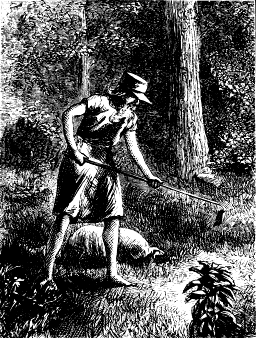A Closer Look at the Apple: Its History, Traditional Uses & Interesting Facts
Let’s not begin this article with the everyday cliché that an apple a day keeps the doctor away, but we’ve already said it anyway so let’s go ahead and look at just why apples are so trusted; where did they come from, how were they used in the past? We’ll also have a look at some fun and interesting folklore about apples.
Where Do Apples Come From?
The origin of the apple seems to go farther back than the Garden of Eden; it can be traced to somewhere in the Middle East or Asia Minor, and that was as far back as 8000 BC. Back then, because the region was dry and people hardly settled in one place, their wanderings eventually brought them to a tree that had little, fruits – apples – that were not as sweet as the apple we know today but still proved to be highly nutritious. Eventually, as these nomadic groups started to settle along rivers, especially the Tigris, the Nile and the Indus, they brought the seed along with them as part of their cultivated plants.
Expeditions started soon after that because people were more settled and could travel for leisure, and soon the apple was on its way to the “civilized” world. The apple went as far as Eastern Europe and it was actually treated as a sign of prosperity. In the more settled communities, apple groves were planted simply to impress and of course were harvested for their nutritive value.
Before long, the apple reached Rome. Alexander the Great, in one of his conquering missions to Asia Minor came across the dwarf apple and took it back with him to Rome. In true Roman ingenuity, the Romans were soon able to graft it and plant it under different conditions so that they could get bigger and better tasting apples.
Because the Romans eventually traveled far in search of lands to conquer, you can imagine that the apple was not left behind. It was almost the only fruit that they deemed to provide ultimate nutrition back then, and they preserved it for their travels and thus got it other lands far and away.
History has it that the Romans eventually landed the apple in England as they fought to conquer it, and it thrived in the conditions there. The English realized the value of this fruit and they cultivated it en masse – it was almost like a national fruit.
The spread was viral after that. As the English traveled to conquer new lands themselves, they took the apple along with them. Because it’s a rather sensitive plant, it took a lot of experimenting to know which species grew best in different climates.
How Did Apples Come To America?
To get to America, the apple came with immigrants, people who were escaping the land ownership system in England for better fortunes in America. Again, there they found that it could thrive. Botanists worked to make it better and better by mixing different species, growing them under different conditions once more, and eventually they ended up with the more than 7500 species of apples that we have today.
 Johnny Appleseed
Johnny Appleseed
A lot of apple growing in America is credited to the legend Johnny Appleseed. He grew thousands of different kinds of apple trees, trying to find which were best suited to different climates. Wherever he traveled, he would carry along apple seeds so that he could teach people how to plant them. In addition to this, he taught them the health benefits that came with eating apples every day as well as how to store them so that when they were out of season, they would still have apples to eat. Because of him, apples became a household name in America.
Traditional Uses Of Apples And It Benefits
The apple’s traditional use back then was not as varied as it is today; apples were mainly eaten raw or stored in cider or wine to preserve. They were believed to keep away illness if eaten regularly, and they were also trusted as a major cure for constipation – it was believed that if you ate apples every day, you’d be as regular as clockwork.
Interesting Facts About Apples
The apple has a lot of folk lore attached to it; did you know that in ancient Greece, for a man to propose marriage to a woman he had to toss her an apple and she had to catch it to accept? Did you also know that when the apple came to Europe and became so popular, all other fruits were called “apple” for some time? In Germany, it was believed that if a man ate an apple that he had rolled around in the sweat of a woman he loved, she would love him back.
The most curious folklore might have been with the English; they believed that if they hung an apple on a tree along with bread soaked in cider, robins would come and there would be lots of fertility in the village, from animals to plants to women. On the very same note, an apple hanging from a tree would chase away evil spirits; in fact, a baby born with an apple-shaped birthmark would have the mark rubbed with an apple to remove it. Of course you need to see it to believe it.